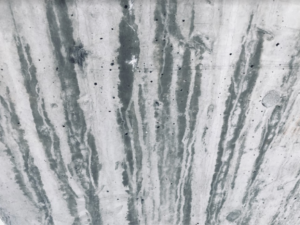
What is soft water attack on Concrete?
Soft water attack concrete is considered to occur in areas where the water immediately adjacent to a concrete structure or concrete infrastructure (flowing or standing) is characterized by a low dissolved ion content. When Portland cement-based concrete is in contact with soft water, the calcium hydroxide (portlandite, Ca(OH)2) in the hardened cement matrix is leached out as the water tries to establish an ion balance. The aggressiveness of soft water attack, measured as the rate at which Ca(OH)2 is leached from the cement paste, is considerably increased if the water contains dissolved carbonic acid due to the presence of aggressive CO2 (Ballim et al 2009) and/or the water is flowing with energy and particulates (ie, erosion).
Why do we care?
This leaching of ions from the hydrated matrix of the concrete composite causes a breakdown and softening of the concrete matrix. This softening normally leads to a breakdown of the hydrated cement matrix and the concrete composite. Depending on the energy and ion content of the soft water, damage can manifest months and years after placement.
That all being said, the best approaches to increase concrete resistance to soft water attacks are described below.
How do we prevent soft water attacks?
One option is coating the concrete with some type of sealer of the sacrificial layer. Epoxy coatings / Silane / Siloxane sealers are sometimes used for lower aggressive or hard to get to areas. The idea is that you create a chemically resistant barrier between the concrete and the soft water. While this method is effective, it is limited in a placement to new structures or structures that are not submerged. Retrofitting in place concrete can be difficult and impossible if the concrete is underground, submerged, or in a tidal / splash zone. These coatings will eventually wear down in high-energy water flow environments (from erosion) and need to ripped and replaced. Just like with wharfs that you currently work on, any type of concrete coating must be applied with surface preparation. If the coating is compromised, the concrete will still be susceptible to damage.
Additionally, Sacrificial concrete layers are recognized as a certain thickness of concrete is placed as a semi-permanent layer that is used to be the first line of defense for the permanent concrete structure of infrastructure. The user is knowingly placing this concrete layer that will get destroyed over time. This layer will extend the life of the concrete structure but like the epoxy coating, protecting it from attack will need to be replaced over time.
Another option is enhancing the concrete mix design. The hydrated cement matrix is the material portion of the concrete composite that is susceptible to attack. Using concrete admixtures, additives, and supplement materials to reduce permeability, reduce the mobility of the bulk-water / pore solution within the concrete, and increase the strength of the Calcium-silicate-hydrate (C-S-H) bonds within the hydrated cementitious matrix. This is normally done by reducing the water-to-cementitious ratio, adding pozzolanic / alumina-based materials to increase the degree of hydration and the energy states of the hydrated phases, and including materials that will reduce the migration of water into concrete and through the concrete. Finally, if there is flowing water of the concrete, the materials listed above would be used to increase the resistance to underwater abrasion and the impact of erosion.
The methods described above would be used to increase the resistance of concrete to both the chemical and physical attacks associated with the deleterious environment created by soft water.
Written By: Jon Belkowitz, PhD, PE and Mallory A. Westbrook
